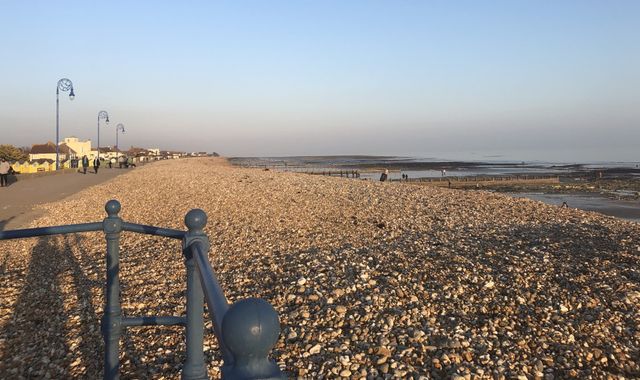COVID-19: What are the rules in England’s different tiers – including the new Tier 4
Written by News on 20/12/2020
England has moved from a three-tier system to four after COVID-19 cases rose dramatically in London and the South East.

Scotland, Northern Ireland and Wales have their own rules, while Boris Johnson has rowed back on a relaxation of rules in the run-up to Christmas.
England returned to a three-tier system on 2 December, but with more stringent measures, and from 20 December a fourth tier will be added – this will essentially be the same as November’s full lockdown.
The areas moving up to Tier 4, Downing Street said, are:
- Berkshire
- Buckinghamshire
- Gosport
- East of England (Bedford, Central Bedford, Milton Keynes, Luton, Peterborough, Hertfordshire, Essex excluding Colchester, Uttlesford and Tendring)
- Havant
- Kent
- London (all 32 boroughs and the City of London)
- Portsmouth
- Rother and Hastings
- Surrey (excluding Waverley)
And these are the rules:
Tier 4:
- Stay at home – this will be put into law so fines will apply if you do not have a relevant excuse
- Exemptions include people needing to travel for education, childcare and exercise
- Unlimited exercise allowed outdoors
- Do not enter Tier 4 areas from other areas and do not leave Tier 4
- Tier 4 residents must not stay overnight away from home
- Work from home if you can
- Gyms closed
- Non-essential retail closed
- Indoor leisure closed
- Indoor entertainment closed
- Personal care sector closed
- Communal worship can take place
- One person can meet just one other person from another household outside – exemptions for support and childcare bubbles
- Do not travel abroad apart from if needed for work
Tier 3:
- No mixing of households indoors or most outdoor places – rule of six in public outdoor spaces such as parks and sports courts
- Hospitality venues closed, except for takeaway, drive-through or delivery
- Indoor entertainment and tourist venues closed (including indoor attractions at mostly outdoor entertainment venues such as zoos and botanical gardens)
- Avoid travelling outside the area other than where necessary, including foreign travel
- No overnight stays outside local area, unless necessary for work, education or similar reasons
- Accommodation closed (with limited exceptions such as work purposes)
- Places of worship open but people cannot interact with anyone outside their household or support bubble
- Weddings, civil partnerships and wakes can have 15 guests – but no wedding receptions allowed
- Funerals can have 30 guests
- Exercise classes and organised adult sport can take place outdoors, but avoid higher-risk contact activity
- Indoor leisure and sports facilities can open but group exercise and sports indoors should not take place, unless with household/bubble
- Elite sporting events can take place but with no spectators
- Live performances, large outdoor events and large business events banned but drive-in events permitted
- Tier 3 areas will get rapid-result COVID-19 tests with the Army helping out to help bring down infections
Tier 2:
- No mixing of households indoors apart from support bubbles – rule of six outdoors
- Pubs and bars must close unless operating as restaurants, and hospitality venues can only serve alcohol with substantial meals (bar snacks such as scotch eggs do not count)
- Table service only for premises selling alcohol and last orders at 10pm, close by 11pm (takeaway allowed after 10pm, delivery, drive through or click and collect after 11pm) and must not open before 5am
- Ordering from the counter allowed at cafes not serving alcohol – but customers must be sitting to consume a meal
- No “shared smoking equipment” (shisha pipes) allowed
- Airports, ports, Folkestone international rail terminal, public transport services and motorway services can serve food between 11am and 5am but no alcohol after 11pm
- Entertainment (not nightclubs and adult entertainment) can reopen, close by 11pm apart from cinemas, theatre and sports stadia if performance started before 10pm
- Reduce the numbers of journeys made and avoid travel into Tier 3 areas
- If you live in a Tier 2 area and travel to a Tier 1 area, you must follow Tier 2 rules
- Overnight stays permitted with your household or support bubble
- Accommodation open
- Places of worship open but people cannot interact with anyone outside their household or support bubble
- Weddings, civil partnerships and wakes can have 15 guests
- Funerals can have 30 guests
- Exercise classes and organised adult sport can take place outdoors, and only indoors if there is no interaction between different households
- Elite sporting events, live performances and large business events can take place with 50% capacity, or 2,000 people outdoors/1,000 indoors (whichever is lower) – social distancing applies
Tier 1:
- Households and support bubbles can mix inside and outside, but the rule of six applies (children are included and if a household is larger than six that is allowed)
- Bars, pubs and restaurants must be table service only, last orders at 10pm, closing by 11pm (takeaway/delivery can continue after 10pm)
- Entertainment (not nightclubs and adult entertainment) can reopen, close by 11pm apart from cinemas, theatre and sports stadia if performance started before10pm
- If you live in a Tier 1 area and have to travel to a Tier 2 area, follow Tier 2 restrictions – avoid travel to Tier 3 areas
- Overnight stays permitted with your household/bubble, or up to six people from different households
- All accommodation can reopen
- Places of worship can reopen but more than six people from different households cannot interact
- Weddings, civil partnerships and wakes can have 15 guests
- Funerals can have 30 guests
- Exercise classes and organised adult sport can take place outdoors, but rule of six indoors
- Elite sporting events, live performances and large business events can take place with 50% capacity, or 4,000 people outdoors/1,000 indoors (whichever is lower) – social distancing applies
Across all tiers:
- The tiers will have a uniform set of rules, there will be no negotiations by different regions
- Everyone should work from home if they can
- Stay in your local area as much as possible
- Registered childcare, other supervised activities for children and childcare bubbles allowed
- Support bubbles can be formed if you are the only adult in a household, only person living with someone with a disability that requires continuous care, live with a child under one, live with a child under five who has a disability
- University students can change their household temporarily once after 2 December to return home for Christmas
- Police will have new powers to close down premises breaking the rules
- Fines of £200 for breaking the rules the first time, doubling for each further offence up to £6,400
- Fines of £10,000 for holding an illegal gathering of more than 30 people, or if a business fails to comply
Across tiers 1 to 3:
- Shops, personal care services, community centres and libraries can open
- Recycling and waste centres, car parks and public toilets remain open
- Early years settings, schools, colleges and universities remain open
- Care home visits can take place with protection such as screens, visiting pods or window visits – regular testing offered to up to two family members/friends by Christmas to support indoor visits
- Moving house and property viewings are allowed
- Indoor leisure – gyms and swimming – can open
- Elite sport, under-18 sport and disabled sport can continue
How tiers will be determined:
The government says decisions on allocating areas into tiers will be made by ministers based on recommendations by scientists and medics, taking into account:
- Infection rates in all age groups
- Infection rates in the over 60s
- How quickly case rates are rising or falling
- Positivity rate (percentage of tests which come back positive)
- Pressure on the NHS – including current and projected capacity, admissions, bed occupancy and staff absences
- Local factors and exceptional circumstances, such as local but contained outbreaks.
(c) Sky News 2020: COVID-19: What are the rules in England’s different tiers – including the new Tier 4






